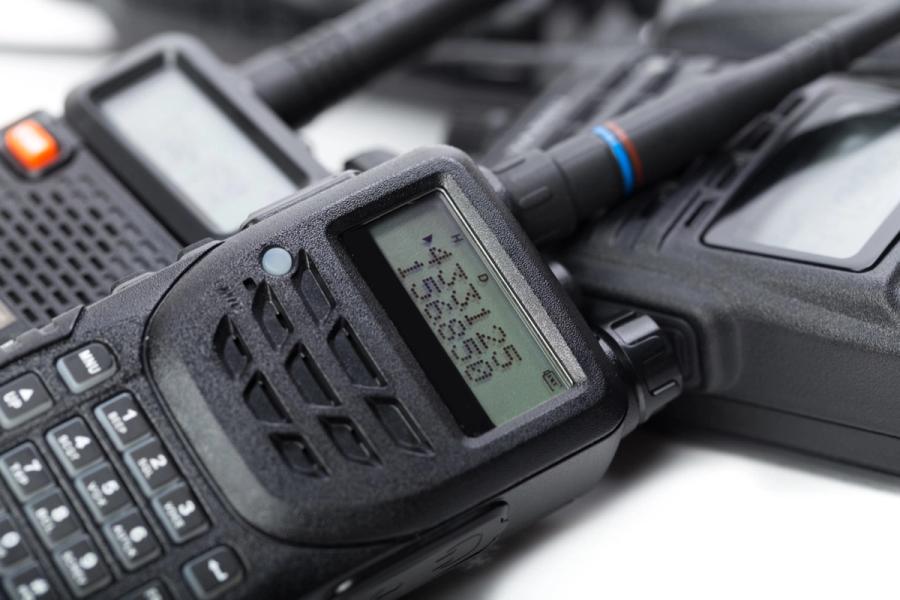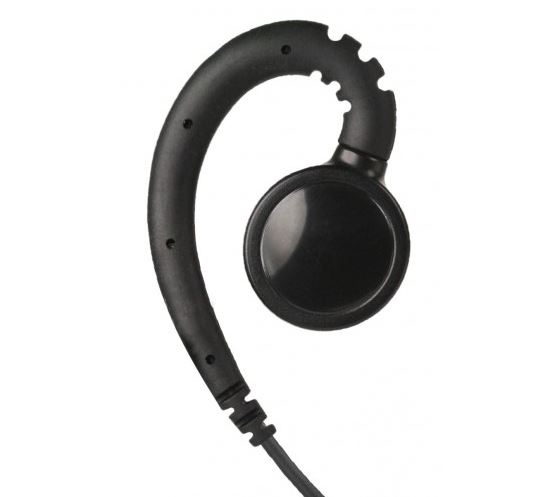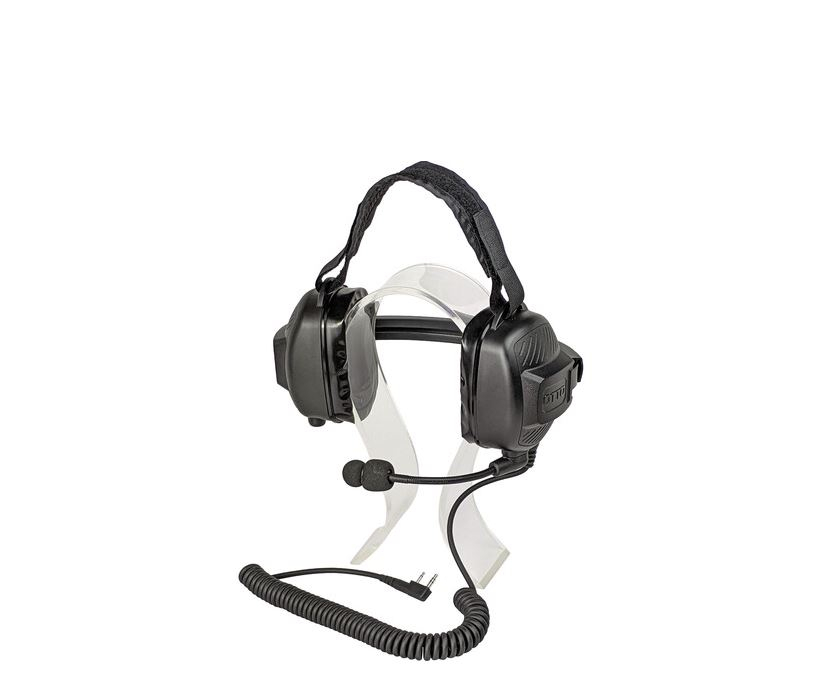
Essential Two-Way Radio Accessories for Your Business
You can buy a great radio and still get mediocre results—or you can pair a good radio with the right accessories and make it sound fantastic, last longer, and fit your workflows like a glove. Accessories are where clarity, coverage, battery life, and ease of use turn from spec sheets into day-to-day performance. This guide explains the essential two-way radio accessories, how to choose them for different environments, and the small habits that keep them working shift after shift.

Motorola CLS1410 Two-Way Radio - 1W, 4C, UHF - M03
Why accessories matter more than model names
Radios are only half the system. The rest is:
- Where the mic sits (and how consistently): a mic near the mouth beats any “loudness” claim.
- How audio reaches the user: a clear earpiece or headset trumps ambient noise.
- Where the antenna is: correct length and orientation significantly affect coverage.
- How power is managed: batteries and chargers determine reliability at hour 12.
- How humans carry the thing: cases, clips, and harnesses decide whether the radio is actually used.
Dial in these pieces and you’ll fix most “bad audio,” “short range,” and “dead battery” complaints—without swapping radio brands.
Must-have accessories (and how to choose them)
1) Remote Speaker Microphones (RSMs)
What they do: Put a mic/speaker at collar height with a Push-To-Talk button on the corded puck, so voices are captured 1–2 inches from the mouth and audio plays near the ear.
Why they matter: The #1 cause of muddy transmissions is a mic too far from the mouth or buried under clothing. RSMs keep distance consistent, work well in gloves, and reduce fumbles.
What to look for:
- Coiled, reinforced cables that survive snags.
- 3.5 mm earpiece jack on the RSM for loud sites.
- IP rating (IP67 for wet/outdoor work).
- Large, tactile PTT you can find without looking.
- Optional noise-reducing or wind-port designs for high-SPL areas.
Best for: Security, construction, warehousing, events, schools (yard duty), hospitality front-line roles.
2) Earpieces & Surveillance Kits
What they do: Deliver discreet audio to one ear (often with an acoustic tube) so users hear clearly without broadcasting to bystanders.
Why they matter: In lobbies, retail, clinics, and guest areas, you need privacy. In loud venues, an earpiece prevents missed calls.
What to look for:
- Acoustic tube for discretion or earhook for comfort and hygiene.
- Inline PTT (for earpiece-only kits) vs. using an RSM’s 3.5 mm jack.
- Replaceable ear tips (keep spares for hygiene).
- Connector matched to your radio brand.
Best for: Front desk, FOH/box office, retail floor, event security, administration.

Voiceporter VP-4604 Earpiece - 1-Wire, G-Hook, Swivel, Replaces HKLN4604 - M03
3) Noise-Reducing Headsets
What they do: Combine hearing protection with a boom mic and PTT so users can speak and hear in high-noise areas.
Why they matter: In forklift aisles, on stages, near compressors, or at construction sites, intelligibility beats raw volume. Headsets eliminate repeats and keep crews safe.
What to look for:
- NRR-rated hearing protection appropriate to your environment.
- Over-the-head, behind-the-head (for hard hats), or helmet-mounted options.
- Sealed boom mics with noise cancellation.
- Glove-friendly PTT (on cup or inline).
Best for: Warehousing, manufacturing, construction, stage/production, stadiums.

Otto ClearTrak NRX V4-11223-S Headset - 24dB, IS-ATEX, BTH, Earcup PTT - K01
4) Batteries & Power (Single, Multi-Unit, Vehicle Charging)
What they do: Keep radios powered through long shifts and quick turnarounds.
Why they matter: Most “range” complaints are actually low-voltage transmit distortion. A disciplined battery program makes radios sound better and last.
What to look for:
- High-capacity Li-ion packs for long duty cycles.
- Six-bank desktop chargers staged where users work.
- Vehicle chargers for supervisors, buses, and security patrol.
- Date labels on every battery; replace on an 18–30 month cycle.
Best for: Everyone. Power is the backbone of reliability.
5) Antennas (Portable & Vehicle)
What they do: Convert RF into range. The right length, band, and mounting location matter more than you think.
Why they matter: A bent, wrong-band, or shielded antenna quietly kills coverage.
What to look for:
- Correct band (UHF vs. VHF) and factory-spec length (quarter-wave/half-wave).
- Flexible, rugged whips for handhelds.
- NMO-mount quarter-wave on the center of a metal roof for vehicles—dramatic talk-back gains vs. a handheld inside a cab.
- Indoor ceiling antennas + low-loss coax kits for stairwells, gyms, long corridors (when a single rooftop antenna can’t reach).
Best for: Any fleet; critical for mobiles, buses, forklifts, trucks, and indoor coverage projects.
6) Carry Options (Cases, Clips, Chest Harnesses)
What they do: Keep radios secure, upright, and accessible.
Why they matter: An antenna pressed sideways under a jacket or mounted horizontal on a belt performs poorly. Carry systems also reduce drops and damage.
What to look for:
- Rigid belt clips with metal reinforcement.
- High-visibility or rugged cases for construction/event crews.
- Chest harnesses for climbers/riggers or where toolbelts crowd hips.
- Swivel options for seated work (security, drivers).
Best for: Construction, events, rigging, venue security, logistics.
7) Programming Cables & CPS (Software)
What they do: Let you configure the fleet: channel names, tones (analog), color code / time slot / talkgroup (DMR), scan lists, emergency behavior, power, and side-key functions.
Why they matter: A clean golden codeplug—cloned to every unit—prevents 90% of “radio problems.”
What to look for:
- Official programming cables for your brand.
- The correct Customer Programming Software (CPS) version.
- Labeling/version control for codeplugs and changes.
Best for: Anyone managing more than a handful of radios.
8) Repeaters, Duplexers & Distribution (Infrastructure “Accessories”)
What they do: Extend coverage and capacity (especially DMR two time slots), and surgically bring RF indoors where it’s needed.
Why they matter: One well-placed UHF repeater with a rooftop antenna often doubles practical coverage. DAS or leaky feeder fixes stubborn basements, stairwells, tunnels, and long corridors.
What to look for:
- High, clear antenna placement; use low-loss coax and weatherproof all connectors.
- Duplexers/cavity filters to isolate the repeater from rooftop noise.
- Indoor antenna kits to drop coverage into problem spots.
Best for: Multi-building campuses, arenas, hotels, warehouses, hospitals, schools, construction towers.
9) Specialized PTT & Foot/Inline Switches
What they do: Move PTT to where hands already are—on a headset cup, steering wheel area, or a foot pedal for busy workstations.
Why they matter: In high-tempo or hands-busy roles, the easier the PTT, the more likely messages are short, timely, and clear.
Best for: Stages, kitchens, dispatch desks, forklift/vehicle operators (paired with mobiles).
10) Hygiene & Maintenance Kits
What they do: Keep shared accessories clean, sanitary, and reliable.
Why they matter: Replaceable ear tips, wipes, and spare acoustic tubes improve comfort and compliance; spare gaskets and accessory port covers keep water out.
Best for: Schools, healthcare, hospitality, venues—any shared-gear environment.
How to match accessories to your environment
Schools & campuses
- RSMs for yard/security; earpieces for admin/office privacy.
- UHF portables; consider DMR for talkgroup capacity.
- Multi-unit chargers in office, nurse’s room, custodial shop.
Events & venues
- Headsets at stages/kitchens; earpieces at FOH/box office/VIP.
- RSMs for floor managers, dock, and security.
- Temporary repeater + high mast; pre-wired indoor antenna drop for concourses.
Warehousing & manufacturing
- RSMs for most; NRR headsets near palletizers/compressors.
- Vehicle quarter-wave antennas for forklifts/tuggers (where policy allows).
- Indoor ceiling antennas in long aisles or mezzanines.
Construction
- IP67 RSMs, hard-hat-compatible headsets, chest harnesses.
- Quarter-wave vehicle antennas for trucks/cranes.
- Leaky feeder in cores; weatherproof every connector.
Hospitality & healthcare
- Discreet earpieces for guest/patient privacy.
- Compact UHF portables; multi-chargers at departments.
- Encryption (digital) for incident traffic as policy requires.
Accessory program = reliability program
Build the kit by role
- Publish a one-page role map: which accessory, which channel set, how to wear it.
- Standardize across departments so loaners are familiar.
Run a battery lifecycle
- Date-label every pack; replace at 18–30 months depending on duty cycle.
- Keep spares at chargers; avoid hot-seating overheated packs.
Weekly five-minute audit
- Check for bent antennas, frayed RSM cords, loose accessory screws.
- Wipe and dry accessories; replace ear tips frequently.
Version-controlled programming
- Maintain a golden codeplug.
- Enable Busy-Channel Lockout and Time-Out Timer to prevent stepped-on calls and stuck mics.
Troubleshooting common complaints (fast fixes)
- “Audio is muffled.” Remove the RSM/earpiece and test the radio’s internal speaker/mic. If clear, the accessory or its connector is the issue. Clean ports, reseat firmly, replace water-clogged acoustic tubes.
- “People can’t hear me.” Move mic 1–2 inches from mouth; check wind ports; swap to a known-good RSM. Verify DMR color code/time slot/talkgroup or analog CTCSS/DCS.
- “Range is worse today.” Inspect the antenna for bends/cracks; tighten it. Swap to a known-good battery (low voltage sags TX power). Verify rooftop connections after weather.
- “Earpiece hurts or keeps falling out.” Change to a different tip size/shape or switch to an earhook style.
- “Headset is too loud/quiet.” Adjust radio’s accessory volume profile if supported; confirm hearing protection rating matches the noise profile.
Myths to skip
- “Privacy codes make conversations private.” CTCSS/DCS only control squelch. For privacy, use digital with encryption.
- “More watts beat bad accessories.” A poor mic position or wrong antenna kills performance regardless of power.
- “All earpieces are the same.” Comfort, hygiene, and connector quality vary widely; buy for your environment, not just price.
- “Vehicle clips are fine inside the cab.” An external quarter-wave NMO antenna on the roof dramatically outperforms a handheld in a metal box.
Implementation checklist (copy/paste)
- List roles (Security, Ops, Maintenance, Admin, FOH, Drivers).
- Assign an accessory per role (RSM, earpiece, headset, harness).
- Stage power (six-bank chargers in rooms people actually use; vehicle chargers for roving roles).
- Fix antennas (replace bent/incorrect-band; add vehicle quarter-waves; plan indoor ceiling drops if needed).
- Lock programming (golden codeplug, BCL/TOT, clean scan lists).
- Train “press-pause-speak” and how to wear gear (2 minutes with each new user).
- Audit weekly (antennas, cords, ear tips, battery labels).
- Refresh quarterly (reflash codeplug, re-weatherproof rooftop connectors, replace worn accessories).